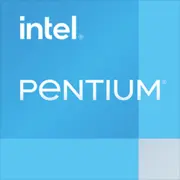Intel Pentium G2120

Intel Pentium G2120: Comprehensive Review of an Outdated but Reliable Solution
April 2025
Key Specifications: Architecture and Performance
The Intel Pentium G2120 processor, released in 2013, belongs to the Ivy Bridge generation. It is a dual-core CPU without support for hyper-threading (2 cores / 2 threads), built on a 22nm process. Its base frequency is 3.1 GHz, and its TDP is 55 watts, making it an energy-efficient solution for basic tasks.
Performance:
- In the Geekbench 6 (2025) test, the processor scores 538 points in single-core mode and 909 points in multi-core mode. For comparison, modern budget processors like the Intel Celeron G6900 (2025) show performance 2-3 times higher.
- The integrated graphics—Intel HD Graphics 2500—are only suitable for image output and simple tasks: playing 1080p videos, working with office applications.
Key Features:
- Support for SSE4.1/4.2 and AVX instructions.
- Power-saving technologies: Intel SpeedStep, Thermal Monitoring.
- No Turbo Boost—fixed frequency of 3.1 GHz.
Practical Example: In 2025, such a processor can be found in offices or home PCs where high performance is not required. For example, a system based on the G2120 easily handles simultaneous web browsing (10-15 tabs) and uses of Word and Excel.
Compatible Motherboards: Sockets and Chipsets
The Pentium G2120 uses the LGA 1155 socket. Suitable chipsets include:
- H61, B75, H77, Z75, Z77.
- Motherboards that support USB 3.0 (B75 chipsets and above) are recommended for a more comfortable experience with peripherals.
Selection Considerations in 2025:
- New motherboards for LGA 1155 are no longer produced. The price for remaining new boards (e.g., ASUS P8B75-M) ranges around $70–90, but they are often found on the secondary market for $30–50.
- It's important to check for BIOS updates: some boards require flashing to work with Ivy Bridge processors.
Tip: If you're building a PC from scratch, look for "motherboard + processor" bundles at auctions. This will save you time and money.
Supported Memory Types
The processor only works with DDR3 memory:
- Officially supports frequencies of 1333 MHz and 1600 MHz.
- The maximum capacity is 32 GB (depending on the motherboard).
Recommendations:
- For everyday tasks, 8 GB (2x4 GB) is sufficient.
- Use dual-channel mode—as this will provide a performance boost of 10-15% compared to single-channel.
Important: DDR4 and DDR5 are not supported. Attempts to install them will render the system inoperable.
Power Supply Recommendations
With a TDP of 55 watts, the Pentium G2120 does not require a powerful PSU:
- For systems without a discrete graphics card, a power supply rated 300-350 watts is sufficient (e.g., be quiet! Pure Power 11 350W, $45).
- If a GPU (e.g., GTX 1650) is planned to be installed, choose a PSU rated 400-500 watts (Corsair CX450, $55).
Tip: Don't skimp on the power supply. Even for a budget build, choose models with an 80+ Bronze certification and overload protection.
Pros and Cons of the Processor
Pros:
- Low power consumption and heat output.
- Affordable price (new processors, if still available, cost $40–50).
- Reliability: with no extreme loads, lifespan can exceed 10+ years.
Cons:
- Only 2 cores—issues with multitasking.
- Outdated architecture: no support for PCIe 3.0, NVMe, USB 3.1.
- Weak integrated GPU.
Example Problem: When simultaneously launching an antivirus scan and rendering video in a browser, the system starts to "stutter."
Usage Scenarios
1. Office tasks: Working with documents, email, video conferencing.
2. Home media center: Watching movies in 1080p, streaming via Plex.
3. Light gaming: Older titles (Half-Life 2, Minecraft) or indie games (Stardew Valley) at low settings.
Real Case: A user from Brazil built a system on the G2120 in 2024 for studying—Zoom, Google Classroom, and LibreOffice run without issues.
Comparison with Competitors
1. AMD A8-5500 (2012):
- Similar price, but better performance from integrated graphics (Radeon HD 7560D).
- Downside: TDP is 65 watts and generates higher heat.
2. Intel Celeron G5905 (2020):
- A modern equivalent (10th generation), 2 cores, 2 threads.
- Geekbench 6: 620 (Single), 1150 (Multi).
- New price: $60.
Conclusion: G2120 falls short against even budget CPUs from the 2020s but has an edge in secondary market price.
Practical Assembly Tips
1. SSD Selection: Install a SATA SSD (e.g., Crucial MX500 250 GB, $35) instead of an HDD—this will speed up OS boot times by 3-4 times.
2. Cooling: The stock cooler is sufficient, but for quieter operation, consider the Deepcool GAMMAXX 400 V2 ($20).
3. Upgrade: Don’t invest further into this platform. It’s better to keep components (case, PSU) for future upgrades.
Final Conclusion: Who is the Pentium G2120 Suitable For?
This processor should be considered only in two scenarios:
1. Budget Build: If you need a PC for basic tasks and your budget is limited to $150–200.
2. Upgrading an Old Computer: Replacing an outdated CPU (e.g., Pentium G860) without changing the motherboard.
Why is it a controversial choice in 2025?
- New processors (Intel 12th-14th generation, AMD Ryzen 5000/7000) offer vastly better performance for the same $100–150.
- However, the G2120 remains a niche solution for those who value minimalism and reliability.
Advice: If the budget allows, it’s better to opt for a modern Celeron or Ryzen 3—they will last longer and provide more upgrade options.
Basic
CPU Specifications
Memory Specifications
GPU Specifications
Miscellaneous
Benchmarks
Compared to Other CPU
Share in social media
Or Link To Us
<a href="https://cputronic.com/index.php/cpu/intel-pentium-g2120" target="_blank">Intel Pentium G2120</a>